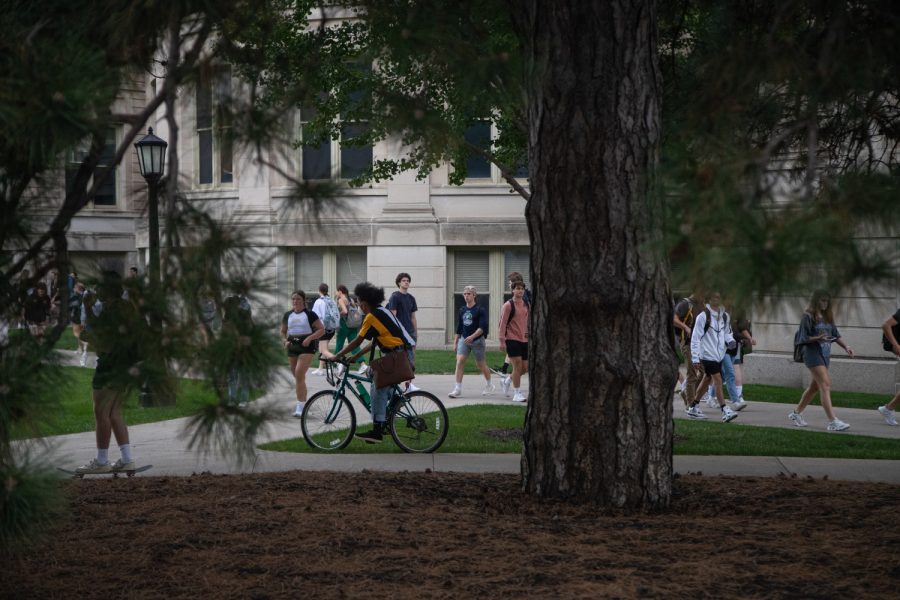UI high enrollment numbers attributed to campus visits and program accolades
Across the U.S., the number of students pursuing higher education after high school has declined. The UI, however, has its third largest class in history, attributing consistent enrollment numbers to campus visits and program accolades.
Students walk and bike to and from class at the University of Iowa’s Pentacrest on Wednesday, Sept. 21, 2022. The University of Iowa has enrolled their third largest freshman class in history, with 4,986 students in total.
September 21, 2022
The University of Iowa’s enrollment is growing amid a decline in the amount of people pursuing post-secondary education in the U.S.
This year, there are 1.4 million fewer students enrolled in undergraduate programs in the U.S. than before the pandemic started. The UI, however, welcomed its third largest freshman class this fall.
Brent Gage, UI associate vice president for enrollment management, said the university recruited students by encouraging campus visits.
“We really, really push to get kids to come visit campus, because we feel if students can come and experience our campus and meet with some of our current students and interact with them and see our facilities and downtown, they can kind of picture themselves here,” he said.
The UI offers interaction with campus virtually through 360-degree virtual campus tours, one-on-one meetings with admissions, in person with Hawkeye visit days, and daily visits.
Tina Arthur, UI director of orientation services, said students often credit the campus tours as the reason they chose the university.
“What we hear a lot is if students are looking at quite a few schools, and they come on a campus, that tends to be something that solidifies Iowa as their choice,” she said. “They will say it felt right when they were on campus.”
Campus tours are given by current UI students. Ashley Cimarolli, a third-year student who has been giving tours since January 2021, said UI tour guides are encouraged to share why they choose to attend the university to give prospective students a glimpse into life at Iowa.
“My answer is usually I came here because there is such a broad area of majors,” she said. “I stayed because I made some really good connections here.”
Along with campus visits, Gage also credits enrollment the numbers to the variety of university programs.
“I think a lot of students are coming to college today with a lot of interests and they don’t just want to do one thing, they want to do lots of things, and we work really hard in our interdisciplinary programs to give students those opportunities,” he said.
For some students, college could be hard to deal with financially. According to College Board, the average annual tuition in the 2021-22 academic year was $10,740 for in-state students and $27,560 for out-of-state students at public universities across the U.S.
According to the Iowa Admission’s tuition and estimate costs, the estimated cost of attendance for the 2022-2023 school year is $21,829 for Iowa residents and $43,792 for non-residents.
Students also chose to take gap years in 2020 when the pandemic started. However, according to the 2021 High School Benchmarks report, only 2 percent of students who took a gap year enrolled in college following their break.
Even with new opportunities, such as gap years and business certificates becoming more mainstream, the UI managed to keep a consistent flow of students.
Gage said during the first two years of the pandemic the UI’s student demographic shifted with fewer out-of-state and international students accepting offers of admission in 2020 and 2021.
“It’s a much different proposition for a student from Florida or California, Colorado, to say I’m going to move to Iowa City, and I don’t know if my classes are going to be in person,” he said. “So, during the periods of pandemic [in] ‘20 and ‘21, we saw a bigger increase in resident students as a proportion of our incoming students.”















